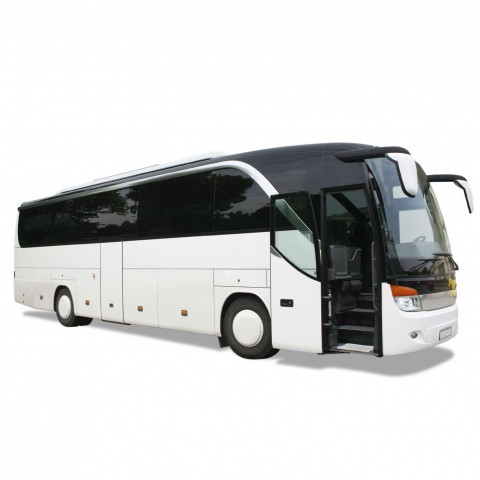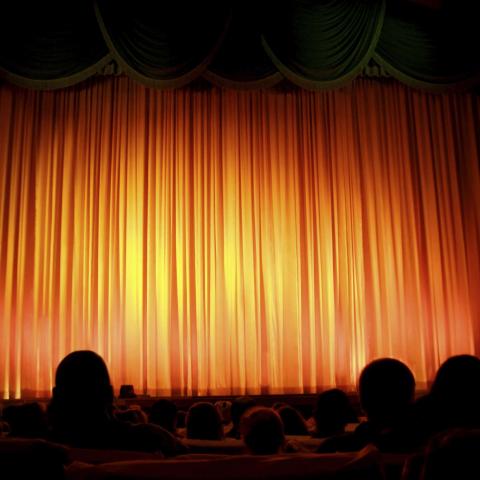Quick, name five Romanian films.
Okay, fine, name two.
Can you even name one? That’s a shame. Especially if you’re studying Romanian!
It’s true that American and British culture have kind of overshadowed Romanian culture, even inside Romania. Most Romanians would have a much easier time naming American films, at the very least.
However, Romanian movies are not only a great window into the Romanian cultural consciousness, they’re also a great way to learn Romanian! In this list, we’ve got ten great Romanian movies that represent totally different aspects of Romanian society. And none of them are strange art-house pieces that you won’t be able to find information on.
Instead, these are the best Romanian movies to watch for language-learners, and they’re beloved by fans throughout the world. Join those fans and boost your Romanian with some of the best Romanian movies ever!
Without further ado, our Romanian movies list.
Table of Contents
- Romanian Dramas
- Nationalist Epics
- Best Romanian Comedy Movies and Lighter Fare
- How to Watch and Learn at the Same Time
- Conclusion
1. Romanian Dramas
Right now, we’re still experiencing the Romanian New Wave, a cinema movement that began in the mid-2000s and continues strong. Many films, as you’ll see, have to do with the revolution of 1989 or its aftermath in some way. They’re characterized by a very realist style and a heavy use of black humor to get their points across.
California Dreamin’ (Endless)
Here’s a true, down-to-earth Romanian drama story. It focuses on a train full of American soldiers, which gets held up in a tiny Romanian town in the middle of nowhere during NATO operations in Yugoslavia. Their only problem is a missing customs form, but that’s enough of an excuse for Doiaru, the corrupt stationmaster, to keep them waiting as long as he can. During their wait, the film explores how the Americans make the best of their time in the small town, including entertainment, romance, and even a minor riot.
Key Vocabulary
Since the whole movie’s plot is made possible by birocrație, or “bureaucracy,” and a missing formular vamal, or “customs form,” it would be good to start with those words. The film is also known as Endless in English, a translation of the Romanian title Nesfârșit. The director actually passed away before the release of the film, and so it runs long because the editor didn’t want to throw away any material.
4 Months, 3 Weeks and 2 Days (4 luni, 3 săptămâni și 2 zile)
In the final years of the communist era in Romania, abortion was banned by the government in an effort to increase the birth rate. This film tells the story of two friends who go through a terrible ordeal in order to terminate a pregnancy. It’s loosely based on a true story, but the law and its consequences were lifted straight from history. The cinematography is intensely minimalistic, with no music and very long takes that may put the viewer in mind of a stage play.
Key Vocabulary
One of the most interesting words related to this historical period, and therefore certain Romanian history movies like this one, is decrețel, which describes a person born during the time of Decree 770, the law banning abortion.
Police, Adjective (Polițist, Adjectiv)
What should you do when your personal ethics go against the job you signed up for? In this film, Cristi, a policeman from a small town, is assigned to the case of a high school student facing a long prison term for drug trafficking. Cristi is married to a teacher and doesn’t want to ruin the life of a young man. But his superior puts more and more pressure on him to follow the letter of the law.
Key Vocabulary
The word închisoare means “prison,” and the root comes from închis, meaning “closed” or “shut.” You should also know, culturally speaking, that the secret police in Romania pre-revolution were strongly feared, and nobody was ever sure who was an informer and who was not. Therefore, the story of a policeman has different cultural baggage in Romania than it would in some other countries.
The Way I Spent the End of the World (Cum mi-am petrecut sfârşitul lumii)
Another film set in the final years of the Ceausescu regime, this film depicts the lives of two young people as they plan to escape Romania. One girl, Eva, is sent to reform school for accidentally breaking a statue of the dictator, but the boy with her is saved thanks to his government connections. She makes plans to swim across the Danube, and in revenge for her punishment, a seven-year-old boy begins to hatch a plan for full-throttle assassination.
Key Vocabulary
Most of the vocabulary in this film is pretty pedestrian. Do keep an eye out for the word supraveghetor, meaning “overseer” or watcher,” and used to refer to an informant or someone keeping tabs on the population for the government. It’s actually from the same roots as “surveillance,” essentially describing one who watches from above.
2. Nationalist Epics
Dictator Nicolae Ceaușescu had a vision for Romania that many people are thankful didn’t come to pass. As part of his control over the populace, the government severely restricted creative freedom in the cinema and had virtually total control over how movies could be made. Despite these limitations, as well as the limitations of the technology at the time, the two movies about Romanian history in this section have stood for decades as pillars of Romanian cinema.
Michael the Brave (Mihai Viteazul)
Prince Michael of Wallachia, in the seventeenth century, made a grand effort to unite Wallachia, Moldavia, and Transylvania into one country. This is an epic film, and one of the greatest Romanian war movies, with the kind of filmmaking and battle scenes that are no longer seen any more in cinema today—we’re talking about ten-thousand actors in some sequences. Originally, the film was meant to have American actors, but the government at the time nixed that idea, focusing only on Romanian stars. Today, decades later, it’s still considered a masterpiece of Romanian cinema.
Key Vocabulary
As this is a war film, you should be aware of words like sabia meaning “sword” or “sabre,” cal meaning “horse,” and suliță meaning “spear.” It might also help to know some of the film’s background, historically speaking. Mihai Bravu (another name for Prince Michael) is considered one of Romania’s national heroes. The element of unity found in the film fits perfectly with the aims of the totalitarian Romanian government at the time to promote nationalist ideals.
The Dacians (Dacii)
Now let’s turn the clock way back and take a look at an ancient war fought between the Romans and the Dacians in the first century AD. Dacia was the name of the land roughly the shape of Romania today, and it was conquered by the Romans in AD 106. Like Mihai Viteazul, this was also a nationalist film meant to make Romanians feel that they were the creation of the Dacian and Roman peoples. The film was a massive sword-and-sandal success, and even today is one of the most popular Romanian movies.
Key Vocabulary
Naturally, a viewer will want to know the words for these ancient kingdoms. Rome is known as Roma, and Romans are called romani. The word for “Dacia” is the same in English and in Romanian, and as you’ll see, has taken on a second, unrelated meaning since this film was released in the 1960s.
3. Best Romanian Comedy Movies and Lighter Fare
Up to this point, we’ve dealt with some pretty heavy-duty themes. You could be forgiven for thinking that Romanians are dreary people. However, that is absolutely not the case. These funny Romanian movies explore periods of change in Romanian society, but they’re not afraid to keep things light.
12:08 East of Bucharest
The date in the title of the movie refers to the time when the president fled following the start of the Romanian revolution.
If you have ever learned anything about the modern history of Romania, it probably has something to do with the overthrow of the Romanian dictator Nicolae Ceausescu. In this 2007 movie, a talk show host goes into the details of how the town of Vaslui was involved in the revolution, with a comedic cast of characters. That’s only to find out that many Romanians doubt that Vaslui contributed to the revolution at all, as there were no registered protests before moment the Romanian president fled.
Key Vocabulary
Since the whole movie is centered around the overthrow of the Ceausescu, you will hear the word revoluţie “revolution” being used continuously throughout the movie. That’s in addition to revolution related vocabulary such as proteste “protests” or politică “politics”.
My Beautiful Dacia
Here, Dacia refers not to an ancient kingdom, but to a car—specifically the most common car owned by Romanians during the twentieth century. The film shows the development of Romanian society through the eyes of different generations of Romanians, and the link between them is always one thing. Rich or poor, old or young, it’s always the Dacia. First it was a symbol of communist ambition, and now it’s a memento of the country’s past that many people are nostalgic for.
Key Vocabulary
Obviously, the main word to learn here is mașină, or “automobile.” But another concept you’ll hear a lot about in this movie is the piața neagră, or “black market,” where most people had to go to get auto parts or gasoline from time to time.
Asphalt Tango (Asfalt Tango)
How can you make a road-trip movie in a country where the roads are bad and almost nobody owns a car? Use a bus! This is a madcap comedy of eleven girls on a bus to Paris, and the romance stories that befall them on the way. Former lovers and future flings are played against each other, as well as the other long-suffering characters on the bus who are forced to become part of these eleven love stories at once. The director, Nae Caranfil, also directed The Rest is Silence.
Key Vocabulary
In the 1990s, Romania was developing fast, and one thing you’ll see a lot of in the movie is construcție, or “construction.” This movie is also unmistakably about the experience of a long-distance bus trip, which in Romanian is known as a călătorie cu autobuzul.
The Rest is Silence (Restul e tăcere)
In 1911, cinema the world over was seen as experimental and a strange new art form. Many people were quite critical of it, but none perhaps more so than theater owners. What happens, then, when the son of a theater owner gets bitten by the cinema bug? He never finds himself comfortable on stage, and instead finds himself drawn to lenses and film. This is the story of Romania’s first feature film, told with beautiful visuals befitting the subject matter.
Key Vocabulary
A “theater” is called a teatru in Romanian. The main character, though, is more interested in cinema, which at the time was called cinematograf. The word “camera” in English actually comes from the Latin word for “room,” since the first cameras were black boxes like small dark rooms. A “room” in Romanian is still camera today. Therefore the name for the picture-taking device in Romanian is cameră, with the accented ă to distinguish it.
4. How to Watch and Learn at the Same Time
Movies aren’t actually particularly efficient for language-learning, when it comes to actual words spoken per minute. When you watch the action epics, for instance, there’s a whole lot of fighting and shouting that isn’t teaching you very much Romanian at all.
But movies are great. There’s so much more that can be said artistically with a film compared to a TV show.
And just like with any other study method, you’re going to get out of it what you put into it. One of the best low-effort things you can do while watching a Romanian movie is to open the sound recorder or voice notes app on your phone and record short snippets of audio that you find challenging to understand.
Do your best to write down the words that you hear, and then check with a tutor or a transcript of the movie to see if you were correct.
The more you listen and re-listen to those little clips of dialogue, the easier all Romanian dialogue will become. You put the effort in, and you get the return.
5. Conclusion
How can you actually watch these movies? For some of them, DVD-by-mail services may be your best bet, as Romanian cinema unfortunately hasn’t broken into the streaming market in the way that many other genres have.
This article in the New York Times has links for some of these films, as well as recommendations for more that didn’t make this list. You may also come across some good finds by searching for Romanian movies online. RomanianPod101 also has an article dedicated to Romanian TV shows you may enjoy watching! Check it out for more great entertainment options.
Although none of these movies are particularly recent, Romania and its cinema industry are only growing in popularity. Your decision to learn Romanian now is going to continue to pay dividends as time goes on.
Which of these Romanian movies do you want to watch first? Are there any good ones we missed? Let us know in the comments!


















